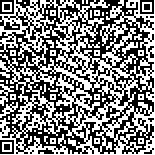| 摘要: |
| [摘要] 目的 探讨影响乳腺癌新辅助化疗疗效的影响因素,为提高新辅助化疗疗效提供参考依据。方法 回顾性分析2014-04~2018-10于该院行新辅助化疗的78例女性乳腺癌患者的临床资料。以获得病理完全缓解(pCR)情况分为pCR组(n=13)和非pCR组(n=65);以临床有效获得情况分为CR+PR组(n=49)和非CR+PR组(n=29),采用Logistic回归分析患者新辅助化疗获得pCR及临床有效的影响因素。结果 78例患者中,pCR的患者13例,pCR率为16.7%;临床有效49例,临床有效率为62.8%。pCR组在肿瘤直径≤5 cm、Ki-67>30%和非Luminal型的人数比例大于非pCR组,差异有统计学意义(P<0.05)。Logistic回归分析结果显示,肿瘤直径>5 cm、淋巴结状况为阳性者是患者获得pCR的不利因素,而非Luminal型是患者更易获得pCR的积极因素(P<0.05)。另外,CR+PR组在化疗周期≥6、Ki-67>30%和非Luminal型的人数比例大于非CR+PR组,差异有统计学意义(P<0.05);且两组在化疗方案的比较差异有统计学意义(P<0.05)。Logistic回归分析未发现患者获得临床有效的影响因素。结论 分子分型、肿瘤直径大小以及淋巴结情况是影响患者新辅助化疗后获得pCR的影响因素,在治疗前应对这些指标进行评估。选用含紫杉类化疗方案、化疗周期长(6个周期及以上)及Ki-67表达>30%的患者更易达到临床有效。 |
| 关键词: 乳腺癌 新辅助化疗 疗效 |
| DOI:10.3969/j.issn.1674-3806.2019.12.14 |
| 分类号:R 655.8 |
| 基金项目: |
|
| Study on the relevant influencing factors of neoadjuvant chemotherapy for breast cancer |
|
SHI Hao, WANG Xiao-hui, GU Jun-wei, et al.
|
|
Department of Thyroid and Breast Surgery, the First Affiliated Hospital of Wenzhou Medical University, Zhejiang 325006, China
|
| Abstract: |
| [Abstract] Objective To explore the influencing factors of neoadjuvant chemotherapy for breast cancer, and to provide reference for improving the effect of neoadjuvant chemotherapy. Methods The medical records data of 78 female breast cancer patients who received neoadjuvant chemotherapy in our hospital from April 2014 to October 2018 were retrospectively analyzed. The patients were divided into pCR group(n=13) and non-pCR group(n=65) according to their pCR(pathologic complete response) status. The patients were divided into(CR+PR) group(n=49) and non-(CR+PR) group(n=29) according to their clinical efficacy. Logistic regression analysis was used to analyze the influencing factors of pCR and clinical efficacy. Results Among the 78 patients, 13 cases got pCR(16.7%) and 49 cases were clinically effective(62.8%). The proportion of the patients with tumor diameters ≤5 cm, Ki-67>30% and non-Luminal type in the pCR group was significantly higher than that in the non-pCR group(P<0.05). The results of Logistic regression analysis showed that the patients with tumor diameters >5 cm and positive lymph node status were the disadvantageous factors for obtaining pCR, while with non-Luminal type was the positive factor for the patients more likely to get pCR(P<0.05). In addition, the proportion of the patients with chemotherapy cycles ≥6, Ki-67>30% and non-Luminal type in the(CR+PR) group was significantly higher than that in the non-(CR+PR) group(P<0.05), and the chemotherapy regimens were significantly different between the two groups(P<0.05). Logistic regression analysis did not find the influencing factors for the patients to obtain clinical effectiveness. Conclusion Molecular typing, tumor diameter and lymph node status are the factors affecting getting pCR after neoadjuvant chemotherapy, and these indicators should be evaluated before treatment. The patients with taxus-containing chemotherapy regimen, long period of chemotherapy(6 cycles or more) and high Ki-67 expression(>30%) are more likely to achieve clinical effectiveness. |
| Key words: Breast cancer Neoadjuvant chemotherapy(NAC) Efficacy |

